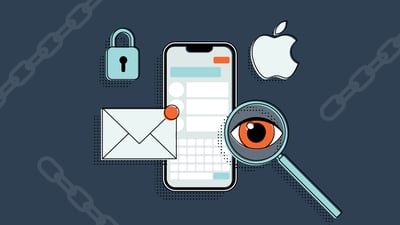In the Parlor with the Candlestick: A Measurement Whodunit

You’re doing attribution wrong.
And it’s stunting your organization's growth.
First things first. What is attribution?
Attribution: A method of assigning “credit” for a conversion to a marketing channel, ad, campaign, or piece of content.
Attribution is how we tell what’s working and what’s not in our marketing strategy. It’s integral to the success of our work as marketers.
But we, collectively as a marketing industry, have been obsessed with using attribution to answer the wrong questions about our efforts. And usually the scene plays out like this.
Marketing Manager: “What channel drove the most revenue this month?”
Email Marketer: “Our emails did!”
Facebook Ads Marketer: “Facebook Campaigns did!”
Google Search Ads Marketer: “No no, it was Search!”
Marketing Manager: “Well you can’t all be right, Google Analytics says email drove the most revenue so let’s focus our efforts and budget on email. See you all next month.”
If you’ve ever been in one of these meetings, my sympathy. This was basically my life for years and it almost made me quit the marketing industry. Here’s why.
Most marketing teams have different individuals or teams assigned to each marketing channel. This makes sense — each channel has its own set of strategies and knowledge required to be successful. But problems arise when we start using this old method of attribution to determine the allocation of internal resources, budget, and even the evaluation of an employee or team's performance.
Now, I’m not saying it’s bad to evaluate an employee on the results of their work. But how we’re using attribution to do so is demoralizing our teams and severely limiting our ability to grow revenue.
Why changing your attribution model won't solve your attribution issue.
You’ve likely heard of attribution models even if you don’t recognize the term. First Touch, Last Touch, Linear, Position Based, Time Decay — these are all different methods of assigning the credit to each channel.
There are arguments across the industry about which attribution model you should use and no one ever seems to come to a consensus. And the reason for this is they are all making the same mistake.
They are looking at this whole user journey as one action, one conversion, one singular event.
As an industry, we talk about funnels and user journeys constantly, but for some reason when it comes to actually evaluating them, we only look at the final end result and not the steps a user must take to get there. We evaluate our efforts only on that final step, and ignore everything that comes before. And, not to get too dramatic but, this is our fatal flaw. By doing so, we deprioritize channels or strategies because they didn't instantly convert a user instead of evaluating what they are successfully doing.
So what do we do instead?
Okay I promise I’ll quit ranting; this blog has been years in the making so I apologize for the soap box. Here’s how you start evaluating your efforts the right way.
Step 1: Actually Establish your Funnel
For most Nonprofits this is usually going to look something like:
First Session (Introduced) > Newsletter Sign Up > Conversion
But sit down with your team and think about this a bit. What steps might a user go through for your organization? Maybe you have petitions or events as an interim step in this process. Don’t get too granular here, most actions will fit into one of three categories; Awareness, Engagement/User Acquisition, and Conversion.
Step 2: Test how your channels perform at each step
Set a goal for each of these steps of your funnel. Use Last Touch Attribution; no need to mess with the others if you’re evaluating this way.
- If it’s in the awareness phase, the goal may be traffic to your website. Evaluate each of your channels or your campaigns for which is driving the most new users to your site.
- If it’s the engagement/acquisition phase, your goal is likely going to be something like newsletter sign ups. Which channel, campaign or strategy is most efficient at this?
- If it’s the conversion phase, determine what conversion event you’re tracking and rinse and repeat with the above.
What you will likely find is that different channels excel at different objectives. Evaluate them based on those objectives.
Step 3: Evaluate each step of your funnel for opportunities to improve
Gonna be honest here, I think Google led us astray a bit by making Ecommerce Conversion rate one of their primary stats in Google Analytics. It’s perpetuated this idea that you should evaluate your marketing just based on total visitors/total conversions.
Instead find your conversion rate for each step of the funnel you built in step 1.
Awareness
Click Through Rate (CTR) from Awareness Campaigns
Engagement
Email Sign Up Conversion Rate: Site Visitors who signed up for Email
Conversion
Solicitation Email Conversion Rate: # of Subscribers who converted
Think about improving the conversion rate at each step of the funnel. If you’ve got a high conversion rate all the way through (well first of all congrats, that’s not easy to achieve) it might be time to put more budget into Awareness ads and get more traffic to your site.
You may also have multiple funnels you’re evaluating. If you have different end conversion goals you could create a funnel for each of them. For example, you might have one funnel for new donor acquisition, and another for Monthly Donor upgrades. Get specific! What are you trying to achieve with each step of your marketing? Measure it!
How adjusting your attribution strategy will improve morale and increase your growth
I mentioned earlier that it wasn’t wrong to evaluate employees or allocate budget based on performance. And I stick by that.
But instead of evaluating an employee in a silo, evaluate how they contribute to the group effort. Each of your channels may have specialized skill sets but they are all interlinked. Email lives and dies on the quality and quantity of its leads — how well is your Email Manager working with your Acquisition team to bring in more quality leads? It’s not enough for your Paid channels just to send traffic, they need to check down the line to ensure that traffic is converting. Marketing is multi-channel, it’s a group effort. By only evaluating an employee based on their individual channel, you are pitting them against each other instead of encouraging them to work together to achieve your organization’s goals. Stop it.
Allocate budget and time to the element of the funnel that most needs improvement. If multiple steps need it, think about where you can make the most impact long term. Your organization’s growth is dependent on how you engage with users at every step of their interaction with you. By breaking down the funnel and optimizing for each of those interactions, you’ll be able to quickly determine what is and is not working, and dramatically grow your results.
What's Next?
If you’ve made it this far, thanks for reading! If you’d like to adjust your attribution strategy but aren’t sure where to start — book a free scale session with us! We can chat about the challenges your team is facing and how you can best apply these concepts.




